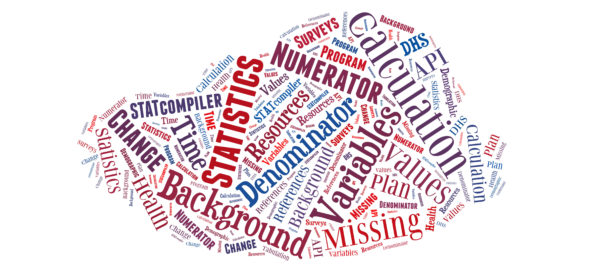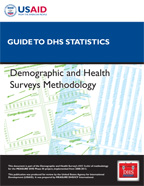The New and Improved Guide to DHS Statistics

What is the Guide to DHS Statistics?
 The purpose of the Guide to DHS Statistics is to provide transparent documentation to users to assist them in understanding DHS datasets and to enable them to reproduce the statistics in DHS reports. DHS surveys collect a wealth of information on a wide range of topics from a representative sample of the population in the countries that participate in The DHS Program. For each country, the information collected is processed, tabulated, and presented in a report that describes the living conditions and the demographic and health situation in the country.
The purpose of the Guide to DHS Statistics is to provide transparent documentation to users to assist them in understanding DHS datasets and to enable them to reproduce the statistics in DHS reports. DHS surveys collect a wealth of information on a wide range of topics from a representative sample of the population in the countries that participate in The DHS Program. For each country, the information collected is processed, tabulated, and presented in a report that describes the living conditions and the demographic and health situation in the country.
Many of the procedures involved are straightforward and are familiar to demographic analysts. However, other procedures need special attention and have been developed based on experience accumulated over many years regarding the preferred way of calculating certain indicators, what to guard against, and what not to forget.
Who is the guide for?
The Guide to DHS Statistics is meant to be a tool for all data users: for those just starting out in data analysis and for those with advanced skills who need a tool for checking procedures. It is intended to serve as a reference document for those directly analyzing DHS data as well as for users who desire a deeper understanding of indicator definitions. The tool can help those who use DHS data to monitor and evaluate programs and assist in informed decision-making.
What’s new in this version of the guide?
The updated Guide to DHS Statistics serves as a replacement for the old tool, but also as an expansion. Though it provides the same basic indicator definitions and calculation information as the original tool for the indicators used in DHS-4, the new guide goes far beyond the original content by adding the many new indicators and topics that are now covered by the DHS-7 tabulation plan. New features in the guide include variables, details of numerator and denominator calculations, discussions of changes over time, links to other relevant data use tools and resources, and links to API indicator data. Complex indicators include examples or figures to facilitate understanding. View an example of an indicator page here.
Where can you find the guide? What else can you expect?
The new guide was a team effort of many DHS Program staff members, and the result is a document that is available as a PDF and online as an interactive tool. In the near future, the guide will be expanded to include chapters on female genital cutting and fistula. The tool will be continuously updated as the DHS core questionnaires and tabulation plans change to ensure that data users always work with the most up-to-date reference guide to the universe of DHS data.


Gosh, I wish I would have had that infomration earlier!